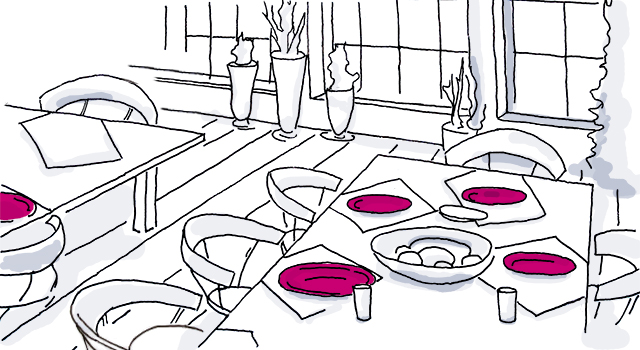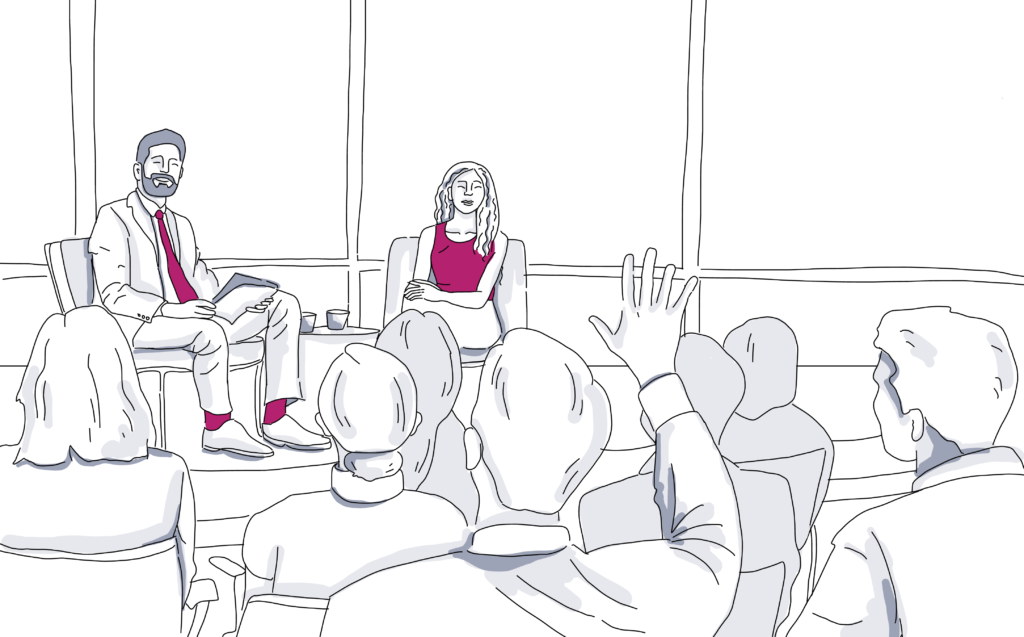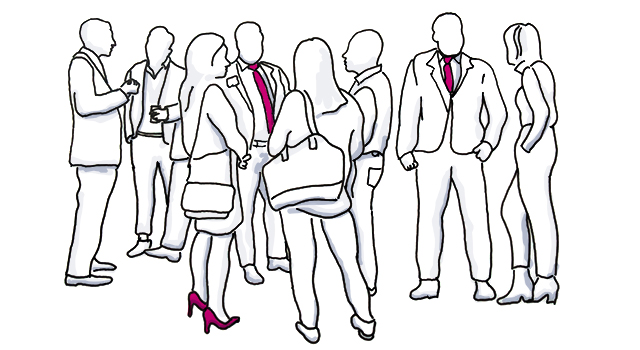
Tips Tuesday: How to Create Introvert-Friendly Events
Creating introvert-friendly events is a challenge because parties, conferences, conventions, and corporate gatherings are the extrovert’s natural habitat.
Small talk, networking, shaking hands, and gathering business cards hand-over-fist comes more easily to extroverts, while introverts usually find these activities draining.
Following the 2012 release of Susan Cain’s bestselling book, Quiet: The Power of Introverts in a World That Can’t Stop Talking, more people are proudly announcing that they’re introverts and learning how to socialize and network in ways that work well for them.

What does introvert mean, anyway?
The networking and socializing style of introverts is explained by brain chemistry. Where extroverts are energized by the release of dopamine”the feel-good chemical released during rewarding activities such as parties and meeting new people”introverts are drained by a dopamine release.
This is why introverts seek out solitary, low-key activities that release acetylcholine, a brain chemical responsible for a pleasant, contented feeling. The introvert’s need for alone-time and decompression is the reason for the common misconception that they’re shy, insecure, or anti-social.
Design events with the needs of introverts in mind, and you exponentially expand the number of guests who thoroughly enjoy your events.
Explore the ideas, tips, and strategies below to create introvert-friendly events that benefit reserved attendees and their gregarious counterparts alike.
Create environments that make introverts feel welcome, too
There’s always someone who shows up early to an event”perhaps they sit in the parking lot or walk around a bit before coming through the door. They’re likely an introvert scoping out the location so they know exactly where to go and don’t have to enter a large room that’s already packed with people.
During the hustle of arrival and welcome activities, event staff members are often busy and preoccupied. Emphasize the importance of a friendly smile and eye contact with guests. This gives attendees confidence that they’ve found the right place and it’s an open environment, which is the perfect way to help introverts feel more comfortable.
These interactions are important to all attendees, but introverts take notice and appreciate any and all efforts to create an easygoing event experience.
Event communication strategies designed for introverts
To prevent introverted guests from feeling out of their element, offer consistent, clear communication throughout the event. Here are some communication ideas to keep introverts in-the-know and at ease:
Before the event
Send an email sharing details about location, parking, check-in, and other relevant information. Offer suggestions for nearby cafés and parks or provide a list of yoga studios that offer lunchtime drop-in sessions. (Even better, create a yoga or meditation lounge on-site and mention it in pre-event communications.)
During the event
Let groups of any size know a few moments before switching gears so introverts can shift focus. During small group or individual activities, announce a five-minute warning so introverts can gather their thoughts, jot down any notes, and prepare to move on.
Don’t underestimate the benefit of a short pause after asking a question”introverts may need to collect their thoughts before they can answer.
After the event
The best way to create introvert-friendly events is to listen to what introverts have to say. But introverts often need extra time to process and share information, which means question and answer sessions and even post-event survey forms can be nerve-wracking.
Instead of asking for session feedback forms at the end of the seminar, allow attendees the option to fill out their survey at a later time. Extroverts will often submit their feedback right away, but introverts prefer having time to process their response.
Providing ample time for attendees to think through their responses produces thoughtful, in-depth replies.

Help introverts navigate event spaces with ease
Introverts prefer getting their bearings without having to ask for help, as much as possible. Facilitate easy event navigation with well-placed signage by check-in areas, communal spaces, and restrooms.
Clearly mark the location and timing of speeches, working sessions, panels, and breaks for refreshments and food. A detailed welcome packet or event app that includes the above information and an event map is particularly reassuring to introverted guests.
Set up multiple refreshment stations around large-scale events so introverted guests don’t have to cross a massive room of shoulder-to-shoulder people to get a snack. With several options to choose from, introverts can enjoy all of the amenities without stress.
Similarly, ensure there’s plenty of elbow room around coffee stations and check-in areas–and during workshops and panel events.
Create spaces for introverts to process and unwind
Introverts tend to be overstimulated by their environment, which makes large crowds and bustling locations difficult”even stressful”to navigate.
Offer places to unwind, and clear opportunities to take advantage of them. Regular breaks provide time to reflect and recharge. Spaces with dim lights and comfortable seating are ideal for quiet contemplation or one-on-one conversations.
Use subdued lighting and soft music within introvert-friendly spaces to signal the intent. Guests will get the idea, but additional signage makes the purpose of the area clear.
To encourage introverts to unwind at events, consider these ideas:
- Plan a designated space for yoga, meditation, or mindfulness exercises to create opportunities for inward moments.
- Design an event-specific crossword or word hunt to leave on tables or in the event packet”introverts are more likely to bond over the answer to 52 down than through small talk.
- Leave pipe cleaners, Lego pieces, or stress balls on the tables”fidgeting is an outlet for many introverts.
- Offer notepads and pens for note-taking (and doodling)”introverts often process thoughts better through writing, and many appreciate writing by hand.

Create networking opportunities for introverts
Networking as an introvert often means finding space within a crowd of extroverts and finding the determination to shake a hand. It’s not that introverts are shy”crowds and noise are overstimulating, which puts an introvert brain into shutdown mode.
Small talk and icebreaker games are valuable but can be challenging for introverts; consider also creating opportunities for shared experiences that facilitate event networking.
Think creatively when it comes to name tags. Ask attendees to add a circle sticker to their tag if they are outgoing and a star to signal a more introverted nature. Then, chatty circles can introduce themselves to less talkative stars.
Or, attendees can select a sticker based on their interests and easily spot fellow nature-lovers, bibliophiles, and football fans.
Encourage attendees to add a fun fact to their badge”about themselves, or just a piece of trivia”to get conversations started. Foster meaningful connections by having guests complete an, “I am seeking¦” or, I can offer¦ statement on their badge.
More fun, introvert-friendly networking ideas to consider:
- Set up board games in communal areas”if the pieces are already in place, someone will start a game.
- Place trivia cards at the tables to promote mealtime chats.
- Spark some pre-event networking with a Facebook group for attendees.
- Hire event staff who are natural conversationalists to mingle and facilitate introductions.
- Bring introversion vs. extroversion front and center. Give attendees a packet of stickers and encourage them to share one whenever they speak with another guest. Through the day, the introverts and extroverts will become clear and this can be a conversation starter on its own.
- Allow networking opportunities throughout the day: Some introverts may prefer to network in the morning before their social tank is drained.
Encourage introverted guests to participate
Introverts are fantastic at communicating ideas and asking questions”but, they’re usually ready after the opportunity has passed. Introverted people need time to process information, and they may be less likely to jump into the conversation until they have a fully formed idea.
Increase involvement in Q&A sessions and discussions with these tips:
- Offer notice before group participation, introductions, and Q&A sessions so introverts can consider their questions or statements.
- Encourage attendees to submit questions or statements through an app or social media discussion thread; introverts often convey information better through writing.
- Ask attendees to jot down questions ahead of time”they can cross points off as they are answered. If there’s anything left on the list, they have a question ready when the time comes.
- Offer an alternative to breakout sessions: Allow people to observe, rather than participate.
Introverts appreciate professional events and networking opportunities as much as extroverts, but these experiences are very rarely designed for them. Try out some of these recommendations to create engaging, introvert-friendly event experiences for the quiet crowd.
To learn more about creating amazing events, read about 5 game-changing meeting industry trends and how to create better networking moments.

